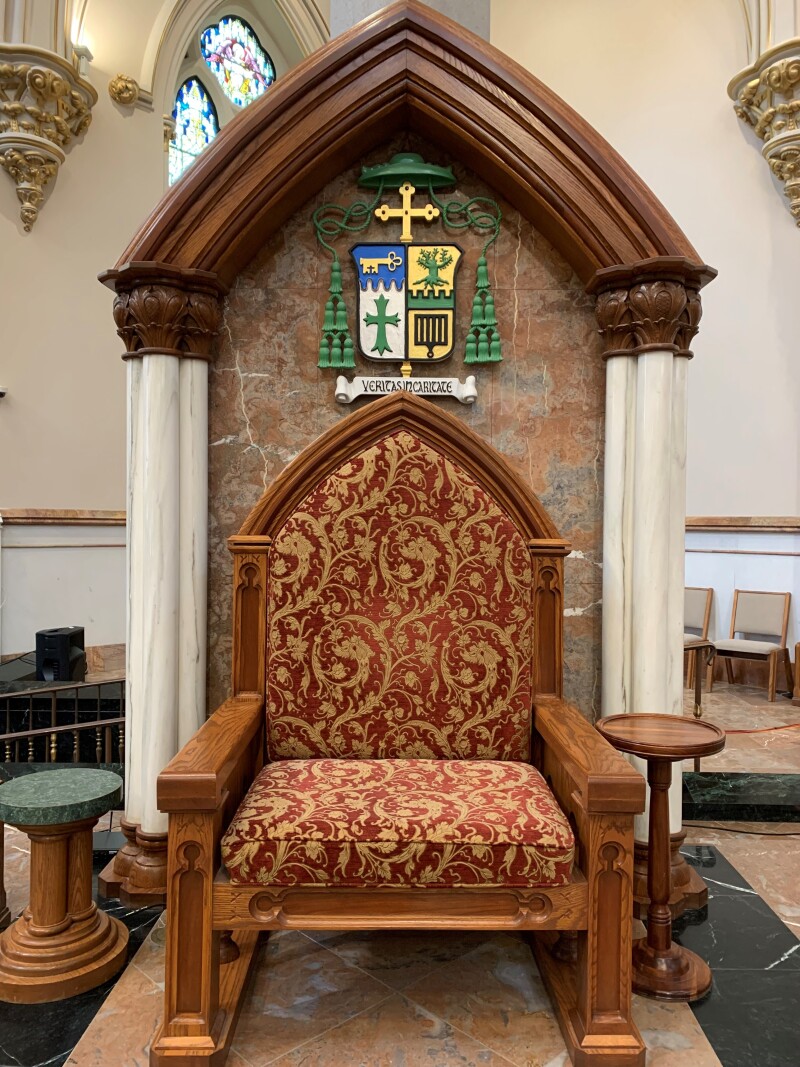
FEAST HIGHLIGHTS APOSTOLIC NATURE OF THE CATHOLIC CHURCH
Sheila Grove
02/15/2022
St. Peter’s important role in the life and history of the Catholic Church cannot be overstated. He features prominently in the New Testament as a leader and one of Jesus’ closest companions. When Jesus said, “Follow me,” Peter did ─ even though that meant leaving his livelihood behind. With a name change, from Simon to Peter ─ a sign of a role change ─ Jesus designated Peter as the rock (foundation) upon whom he would build his church.

Photo/Sheila Grove
The teaching and preaching authority of the church was given to Peter and is handed down for all time through bishops in what is called apostolic succession. When Catholics profess the Creed at Mass, it is an assent to the apostolic (from the Greek word meaning messenger) nature of the one, holy, Catholic and apostolic church.
A visible sign of that succession is the presence of a cathedra (bishop’s chair) in every cathedral. In St. Peter Cathedral, the mother church of the Diocese of Erie, the cathedra has a prominent place in the sanctuary. Above it is the coat of arms Bishop Lawrence Persico, the 10th bishop of the Diocese of Erie. This is an important testament to the active presence of the Holy Spirit in the sacramental life of the church.
St. Peter is relatable as a follower of Jesus. He made mistakes, he was impulsive and gave into his fears. He maintained his commitment to Jesus and after receiving the gifts of the Holy Spirit at Pentecost, he found strength to proclaim the truth and lead the early followers to build the church to which Catholics belong.
Some of the most profound words in Scripture were said by St. Peter, “Lord, to whom shall we go? You have the words of everlasting life. We have come to believe and are convinced that you are the Holy One of God,” (Jn 6: 68-69).
Editor's note: Here is a link to more information about the Chair of St. Peter at the Vatican.
-
